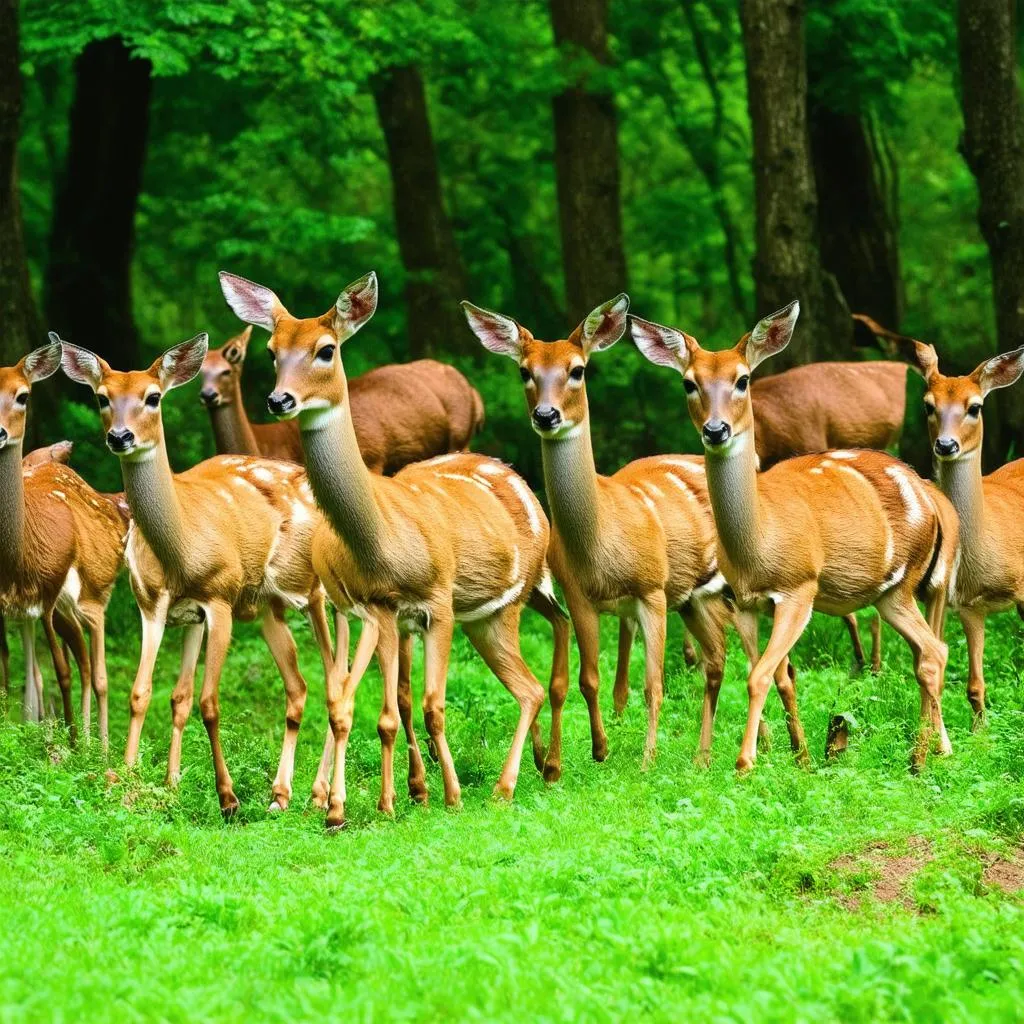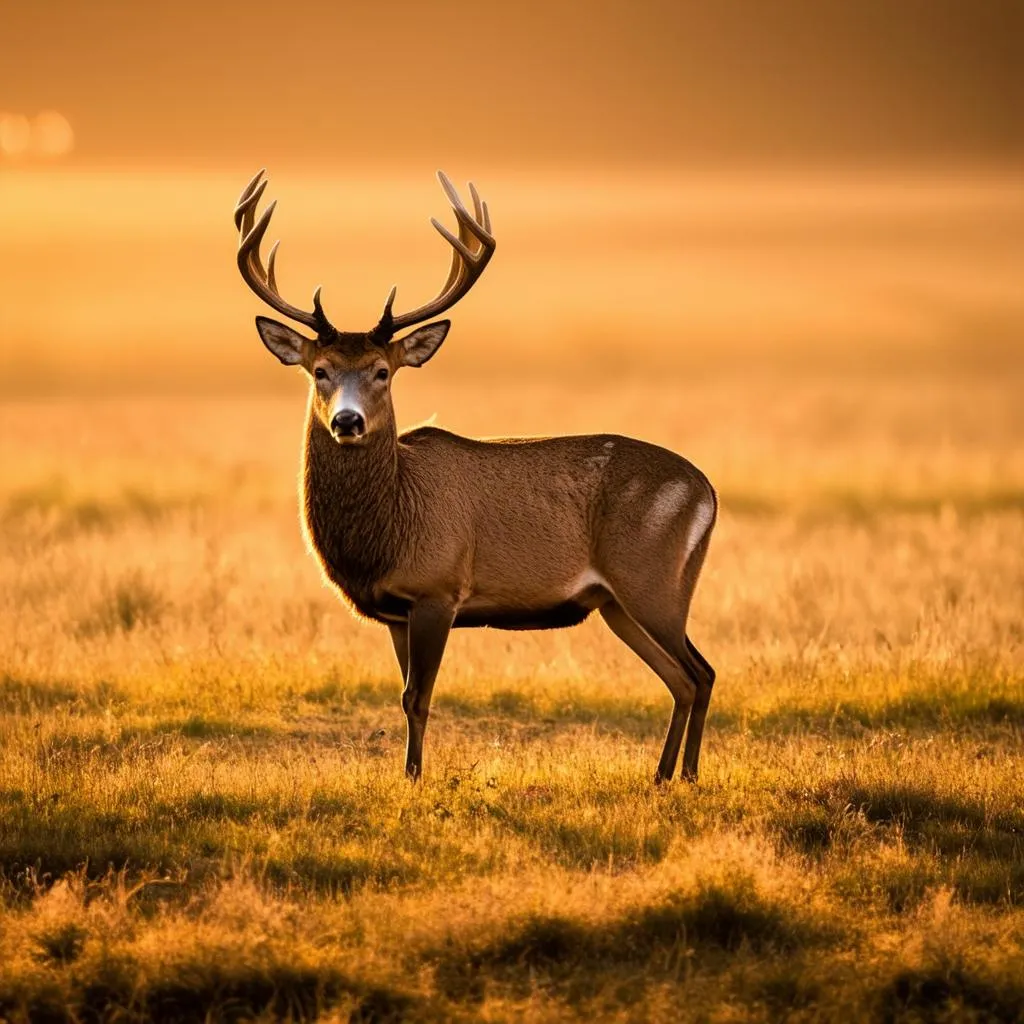Have you ever been driving down a country road, caught a glimpse of a white-tailed deer bounding through a field, and wondered if it was alone or part of a larger group? It’s a question that has intrigued nature enthusiasts and casual observers alike. Do deer, those graceful inhabitants of forests and meadows, prefer the company of their kind, or do they navigate the world solo? Let’s delve into the fascinating world of deer social behavior and uncover the truth behind their travel habits.
Understanding Deer Herd Dynamics
The answer to whether deer travel in groups is a bit more nuanced than a simple yes or no. It depends on several factors, including the species of deer, the time of year, and the availability of resources like food and water.
Types of Deer Groups
While the term “herd” is often used to describe any group of deer, they typically form specific social structures:
- Doe Groups: The most common type of deer group consists of a mature doe and her fawns from the current year and sometimes the previous year. These groups can range in size from a few individuals to over a dozen, especially in areas with abundant resources.
- Bachelor Groups: During the fall and winter, bucks often form loose groups called bachelor groups. These groups are typically smaller than doe groups and provide companionship and protection from predators.
- Solitary Deer: While deer are generally social animals, it’s not uncommon to spot solitary individuals. This is particularly true for mature bucks, which tend to be more solitary outside of the breeding season, also known as the rut.
Seasonal Influences on Deer Grouping
The time of year plays a crucial role in deer social behavior. During the spring and summer, doe groups are busy raising their fawns, while bucks focus on growing their antlers. As fall approaches and the rut begins, bucks become more active and less social, often engaging in fierce competition for mates. Once the rut ends, deer groups may become larger and more fluid, as food becomes scarcer during the winter months.
Factors Affecting Deer Group Size
The size of deer groups can vary significantly depending on several factors:
- Habitat: Deer living in areas with ample food, water, and cover tend to form larger groups than those in areas with limited resources.
- Predation Pressure: The presence of predators can influence deer group size. Larger groups offer greater protection from predators, as there are more eyes and ears to detect danger.
- Human Activity: Deer living in areas with high human activity, such as hunting or development, may form smaller, more secretive groups.
The Importance of Observing Deer Behavior
Understanding deer social behavior is essential for hunters, wildlife enthusiasts, and anyone who lives in areas where deer are present. By learning how deer interact with each other and their environment, we can better appreciate these fascinating creatures and minimize human-wildlife conflicts.
Tips for Observing Deer in the Wild
- Be patient and quiet: Deer are easily startled, so it’s important to be patient and avoid making loud noises.
- Use binoculars or a spotting scope: These tools will allow you to observe deer from a distance without disturbing them.
- Visit areas where deer are known to frequent: Look for deer trails, feeding areas, and watering holes.
Planning Your Next Wildlife Adventure?
If you’re interested in observing deer in their natural habitat, consider planning a trip to a national park, wildlife refuge, or other areas known for their deer populations. Remember to research the best time of year to visit and obtain any necessary permits or licenses.
 Deer Herd in Forest
Deer Herd in Forest
FAQs about Deer Social Behavior
Q: Do all deer species travel in groups?
A: While most deer species exhibit some degree of social behavior, the size and structure of their groups can vary. For example, moose are generally more solitary than white-tailed deer.
Q: Why do deer gather in open fields?
A: Deer are often drawn to open fields to graze on tender grasses and other vegetation. However, they are also more vulnerable to predators in these open areas, so they tend to be more vigilant and may form larger groups for protection.
Q: How can I tell if a deer is a buck or a doe from a distance?
A: During the fall, bucks can be easily identified by their antlers. However, outside of the antlered season, it can be more challenging. Look for differences in body size and shape, as bucks tend to be larger and more heavily built than does.
 Solitary Buck in Meadow
Solitary Buck in Meadow
Conclusion
The social lives of deer are complex and fascinating. While they may not always travel in large herds, they are social animals that rely on each other for survival. By understanding their behavior, we can better appreciate their role in the ecosystem and promote peaceful coexistence. Don’t forget to check out travelcar.edu.vn for more insightful articles about wildlife and travel adventures.